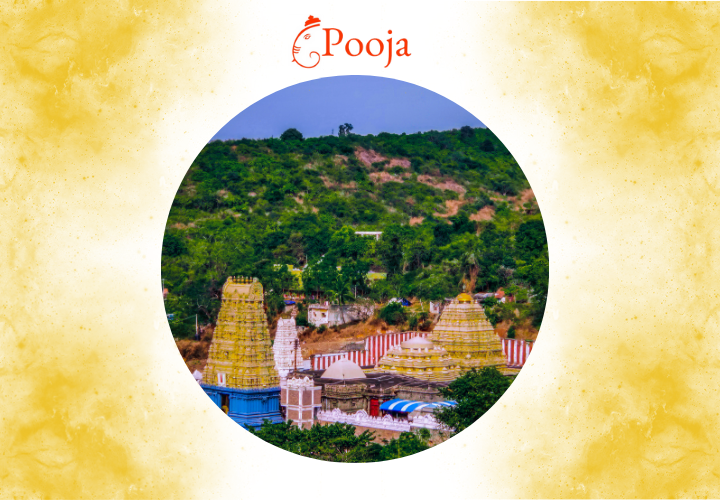About this puja
The Narasimha Swamy Temple, located in Simhachalam near Visakhapatnam in Andhra Pradesh, India, is one of the most important and revered temples dedicated to Lord Narasimha, an incarnation of Lord Vishnu. This temple is notable for its unique blend of Dravidian and Kalinga architectural styles and its deep historical and mythological significance.
Mythological Origins
The Simhachalam temple is steeped in legend and mythology. According to Hindu tradition, the temple commemorates the site where Lord Vishnu appeared in his Narasimha avatar (half-lion, half-man) to protect his devotee, Prahlada, and to kill the demon king Hiranyakashipu. The name Simhachalam is derived from the words 'Simha' (lion) and 'Achala' (hill), indicating the hill of the lion. The deity is worshipped as Varaha Narasimha, combining elements of both the Varaha (boar) and Narasimha avatars of Vishnu, symbolizing the protection of the earth and the destruction of evil.
Historical Development
The temple's origins can be traced back to ancient times, with inscriptions indicating its existence as early as the 9th century during the rule of the Eastern Ganga dynasty. However, the present structure of the temple was constructed in the 11th century by the Chola king Kulothunga Chola I and later extensively renovated by the Eastern Ganga and Vijayanagara kings.
One of the significant contributors to the temple's architecture was the Gajapati kings of Odisha, particularly during the reign of King Narasimha Deva I in the 13th century, who made substantial endowments and structural additions to the temple.
Architectural Features
The Simhachalam temple is a magnificent example of a blend of Dravidian and Kalinga architectural styles. The temple complex is adorned with intricately carved pillars, ornate sculptures, and detailed reliefs depicting various deities and mythological scenes. The main sanctum (garbhagriha) houses the idol of Varaha Narasimha, which remains covered in sandalwood paste throughout the year, except during the annual festival of Chandanotsavam. This unique practice symbolizes the cooling of the fierce Narasimha avatar. The Rajagopuram (main tower) and the Kalyana Mandapam (marriage hall) are other architectural highlights of the temple.
Festivals and Rituals
Chandanotsavam, also known as Nijaroopa Darshanam, is the most significant festival celebrated at the Simhachalam temple. It takes place on Akshaya Tritiya, usually in April or May, when the sandalwood paste covering the deity is removed, and the idol is visible to devotees in its true form. This event attracts thousands of pilgrims from across the country. Other important festivals include Narasimha Jayanti, Vaikuntha Ekadashi, and Brahmotsavam, which are celebrated with great devotion and grandeur.
Significance and Beliefs
The Narasimha Swamy Temple at Simhachalam is considered one of the 32 Narasimha temples in Andhra Pradesh and holds immense religious importance. Devotees believe that worshiping at this temple grants protection from evil, relief from ailments, and the fulfillment of desires. The temple is also known for its philanthropic activities, including providing free meals (annadanam) to pilgrims and supporting educational and medical facilities in the region.
Administration and Maintenance
The temple is administered by the Simhachalam Devasthanam, under the jurisdiction of the Andhra Pradesh Endowments Department. The trust is responsible for managing the temple’s daily rituals, festivals, and the maintenance of its structures. The contributions from devotees are utilized for the temple's upkeep and various charitable activities.
The Narasimha Swamy Temple at Simhachalam stands as a testament to the enduring faith and devotion of its followers. Its rich history, architectural splendor, and deep spiritual significance make it a vital pilgrimage site, reflecting the profound religious heritage of Andhra Pradesh.
Comments (0)

.png)







